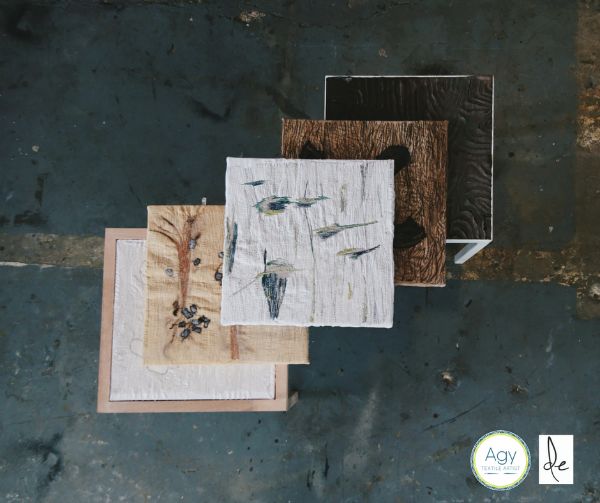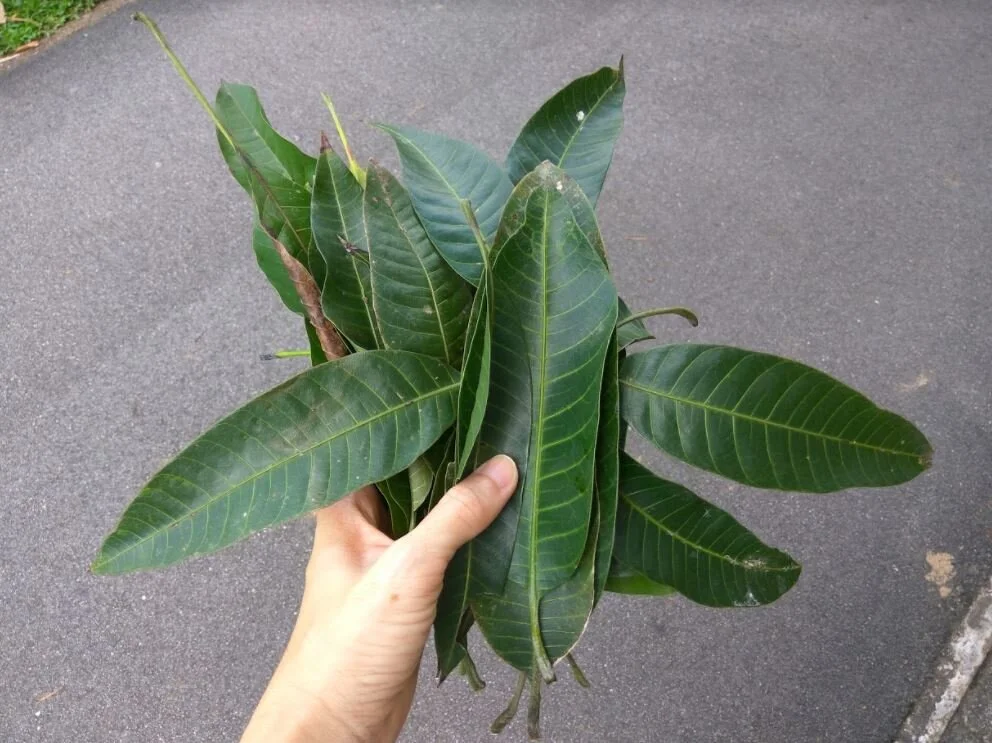Artist Residency - Week 1
Sometimes you need a change of scenery to make things work, to get those creative juices flowing, to just start on a new upcycling / sewing project! Well, I got that opportunity courtesy of my artist friend, Isabelle Desjeux. She very kindly allowed me to use her beautiful studio, L'ObservARToire, for the whole of October (in fact she has a line up of artists using her studio). I am really excited because it is nestled in a quiet part of Singapore, away from traffic, away from the crowd!
I will be reimagining nature, reimagining food waste, and more importantly, reimagining textile waste. Everyday, I will be foraging in my neighbourhood and around the studio for leaves, bark and even food scraps! It has started off well, and we have even managed to get the children from the Blue House International School to bring in some food scraps. So this month is all about upcycling, sewing and natural dyeing.
Art Residency at Observartoire
Why food waste?
We throw out so much food from ugly vegetables, expired produce and waste from the kitchen. Some people use their kitchen waste to make compost, but why not see what they can offer in terms of colour? By the way, food waste is a huge problem in Singapore. According to National Environment Agency, it accounts for 10 percent of the total waste generated while only 14% of it gets recycled.
Why nature?
Nature has a lot to offer to us - a relaxing environment, food, shade and services. But they also give us rich earthy colours.
Why textile waste?
We just have too much textile waste be it clothing, linens and furnishings. Just take a look at our thrift stores - we are just drowning in our own clothing. According to a recent documentary by Channel News Asia, The Salvation Army in Singapore receives 10 tonnes of donations of which 60% is clothing. And this amount increases to 60% during peak periods such as festive seasons! Throughout this residency, I will be using old hotel bed linen purchased from Hock Siong and old bed linens from Raffles Hotel (I must thank Muriel Boutin-Becuwe for helping me reach out to the hotel and getting their management to agree with passing them onto me for upcycling).
Eucalyptus Dye Pot
What's Happened During Week One
Week one was all about settling in, and can you believe that I forgot about my sewing machine during the move? I remembered my pots and pans, but the sewing machine got left at home. Anyway, it happens - I am getting old.
How do I feel?
To say I feel ecstatic might be an understatement. I am very happy to be in a work space without my family telling me to clear up my things after a project. Not to say I'm messy, but knowing that I have a wet and dry work space for my natural dye and sewing experiments is liberating.
I feel relaxed. The view is amazing so every time I need to take a rest, I just look at the view and take a deep breath - aaaaahhhh.
I feel inspired. We are so close to nature, so it's a great place to be foraging for my leaves, flowers and bark, but it's also an inspirational place too! We are also within the Blue House Nursery and International Preschool, and they have a great kampung (Malay for community) spirit, they have even agreed to contribute to the kitchen waste for the dyeing.
Blue Pea Flower
Eucalyptus Bark and Blue Pea Flower (Clitoria ternatea)
I dyed the sheets using the eucalyptus bark from my neighbourhood park, and I started to collect the blue pea flower from the hedges surrounding the school grounds. You might remember the last time I tried eucalyptus, and this time around I still get the rich earthy tones of the bark. I'm so glad I was able to replicate the results but important learning points this time around are:
Not to be greedy and stuff too much fabric into the pot; this results in uneven pigments on the fabric. Ideally, I should have a huge vat that is as tall as me, but alas.....
Keep stirring and watch the temperature... and time!
It might be possible that bark (or even leaves) collected during different times of the year produce shade of brown? I will have to try this out.
Always remember to label your samples and cloth prepared for natural dyeing. Preparing the cloth takes at least one and a half days so I take notes and label. I am still trying to figure out a good way to do the labeling.
Eucalyptus Dye and Screen Printing
Here are the results of the eucalyptus with immersive dyeing and screen printing.
Next is mango leaves and rukum masam!
Stay tuned for week 2.
Oh, I think I should start some stitching.
Eucalyptus Dye and Embroidery
You might enjoy these blog posts on my other natural dye experiments








